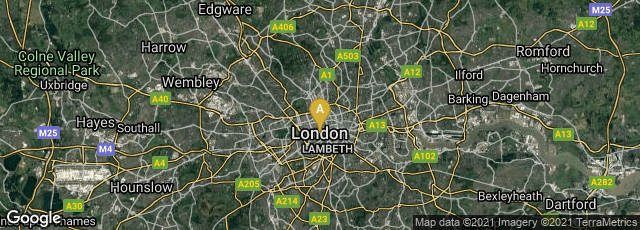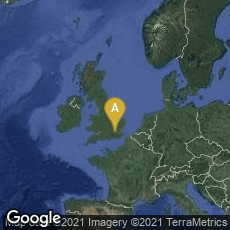At the foot of the title page, beneath Charles Knight's imprint, is the price of the volume: "Price One Gunea, Bound in Cloth."


A: London, England, United Kingdom
Though it originally intended to reach the widest possible audience of lower class and middle class readers by pricing its publications as cheaply as possible, the upscale members of the Society for the Diffusion of Useful Knowledge soon became more ambitious in their publishing plan, and issued more expensive publications along with those at low prices. In 1832 they embarked on a series of finely engraved portraits of famous figures in the history of culture with accompanying text, completing the series in 1837. These portraits and associated text were printed on fine paper, probably on hand-presses at William Clowes, rather than high-volume printing machines, since the relatively high price of these publications restricted the number of copies that could be sold.
Following Charles Knight's strategy of issuing larger works in parts, the parts for the SDUK's Gallery of Portraits were issued monthly at half a crown each. When each volume in the 7 volume series was complete it was offered for sale in a handsome cloth binding for the high price of one guinea per volume. In addition the SDUK issued a limited edition of 100 india paper proofs of the prints on large paper, suitable for framing. These could be subscribed to separately from the prints in book form.
Even though Charles Knight issued many of his publications in parts, finding the original parts today is very difficult. I have three of the original parts for this series in my collection. Part 14, issued on June 1, 1833 is of special interest because of the message on the rear wrapper documenting a printers' "dispute":
"The contents of Number XV [15] cannot be announced, as a suspension of the business of copper-plate printing in London, in consequence of a dispute between the masters and journeymen, prevents the printing of the plates proceeding with regularity. The same cause has rendered it necessary to substitute Wollaston in No. XIV [14] instead of Ray as advertised."
From this message we may conclude that interruption of the printing of the copperplates began during the printing of the 14th part, and had not been resolved by the time this part was completed. Because technically workmen's "combinations" and strikes were illegal in England at this time, the printers of the copperplates did not formally go on strike, but either slowed down or suspended work in some way to express their dispute with the "masters".